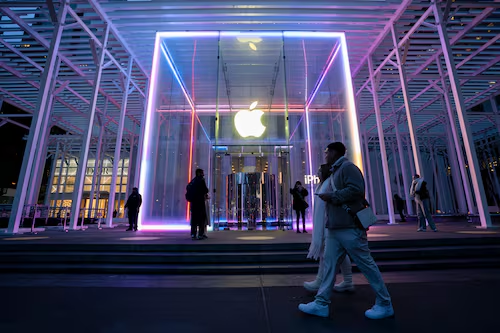1. Antitrust Red Flags: The Walled Garden
Apple is currently facing a major U.S. antitrust lawsuit accusing it of maintaining an illegal monopoly through its tightly controlled ecosystem—restricting app developers, accessory makers, and consumer choice (engx.theiet.org, apnews.com). This "walled garden" approach may protect privacy and core experience, but it also locks out competition and raises barriers for rivals to introduce groundbreaking features.
2. Homogenization of Design
Pre-2007, the smartphone market thrived on bold design diversity—from flip phones and keyboards to slider and swivel models. But after the iPhone’s debut, everything became a black rectangle. Manufacturers rapidly mimicked Apple’s form and functionality, leading to an industry-wide design plateau (engx.theiet.org). The real victims? Unique hardware innovations and daring form factors.
3. Feature Farming: Incrementalism Over Innovation
Apple's recent iPhones have moved in baby steps—USB‑C adoption only under regulatory pressure, static notch design, and minimal annual upgrades (techcrunch.com, medium.com). Market analysts confirm that consumer excitement has waned, resulting in declining unit sales in the U.S., China, and India (fool.com). The result: flagships feel increasingly indistinguishable.
4. AI Lag: Playing Catch‑Up
While rivals like Google and Samsung race ahead with on-device generative AI, Siri continues to lag behind. Apple's cautious, privacy-first approach has delayed its AI integration, making iPhones feel outdated in next-gen tech (medium.com). In opinion pieces, it's even suggested that the iPhone symbolizes stagnation, not innovation (theguardian.com).
5. Financial Leverage: Suppressing Risk
Apple’s massive profit margins (often above 45%) and deep pocketbooks allow them to control supply chains—grabbing key components, dictating pricing, and squeezing suppliers . Smaller brands then play it safe, producing “me‑too” devices rather than pushing bold new tech. The result: complacency has replaced creativity across the industry.
6. IP and Legal Tactics: Innovation by Lawsuit
From suing over rounded corners to enforcing trademarks on apples, Apple aggressively uses litigation to maintain leverage (techcrunch.com). This legal dominance can chill smaller innovators and deter them from pushing boundaries or challenging Apple’s turf.
⚖️ What This Means for Consumers & the Industry
-
Consumers pay premium prices for minor upgrades, rarely experiencing true innovation.
-
Rivals mimic Apple’s safe path rather than risk disruptive features.
-
Startups face a hostile legal and market environment—discouraging fresh ideas.
🔮 The Way Forward
-
Regulators must ask: should Apple’s control be restricted to enable competition?
-
Rivals and startups must innovate fearlessly, tackling experimental shapes, AI, and interfaces—even if success isn’t guaranteed.
-
Consumers must demand more—not just better cameras or thinner bodies, but bold reimagining of what smartphones can be.
📝 Conclusion
Once a beacon of groundbreaking innovation, Apple has arguably shifted to incremental safety and control—prioritizing profits and ecosystem dominance over risk-taking. The outcome: a smartphone landscape stuck in design purgatory, where novelty is rare, and true disruption is sidelined.
If we want the next leap—foldables, AI-first UI, radical hardware—we must break free from Apple’s monoculture, encouraging diversity, daring, and democratic access.









0 Comments